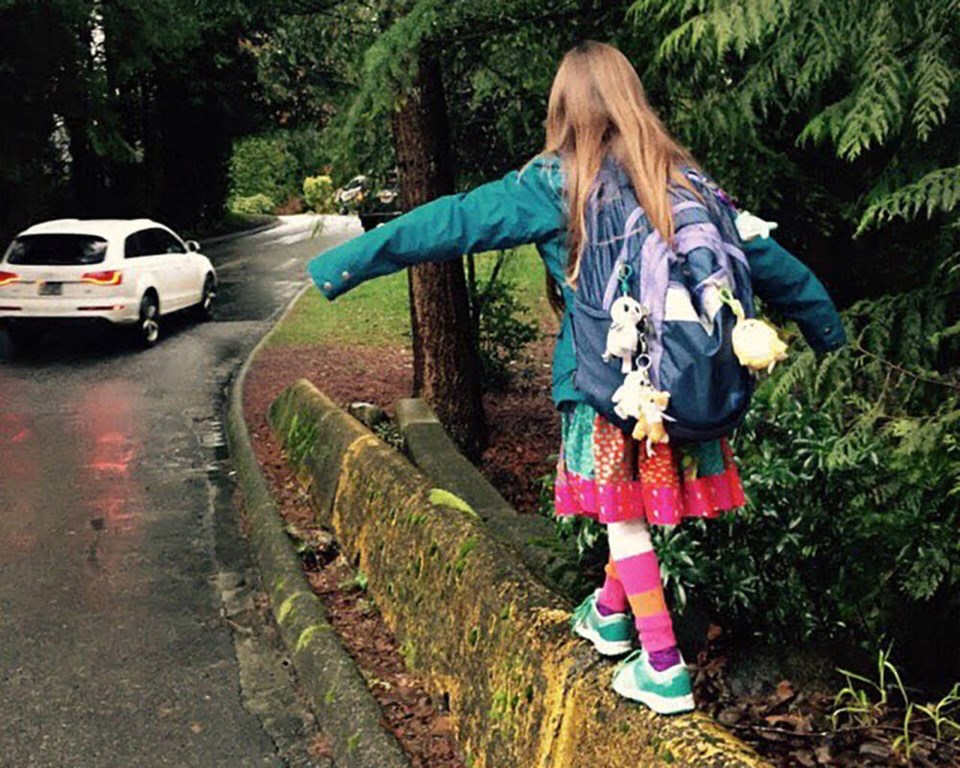Why don’t students walk or bike to school anymore? After all, it’s better for their health and prepares their brains for learning.
Kids’ safety on their daily commute to and from school is a top priority for parents and communities alike. In a recent email exchange, Safe Streets advocate Martyn Schmoll shared his insights on school zone safety.
Schmoll’s involvement with Safe Routes to School initiatives at Canyon Heights Elementary and École Braemar allowed him to identify the most common fear among parents preventing kids from walking and riding to school – the apprehension of their children being endangered by drivers. This fear deters parents from allowing their kids to walk or roll to school.
They aren’t wrong. According to ICBC, people driving in school and playground zones injure 35 students per year across BC. Ironically, this leads parents to drive their kids, causing the very conditions that make school zones dangerous. Erk. It’s one of those mind-benders, but self-evident as well.
At Canyon Heights, the challenge revolved around the chaos caused by drivers dropping off their kids on the roadway due to limited lay-by spots. Solutions like Drive-To-Five zones (people drop their kids off for a five-minute walk to school) and student valets yielded limited success.
Additionally, a month-long initiative involving electronic scanning of students and area mapping saw a surge in ridership and walking numbers, only to decline once the event concluded. Similarly, HUB Cycling’s Bike to School Week sees hundreds of children riding bikes to school, but few continue to ride beyond the event.
Over at École Braemar, the recurring problem persisted as drivers continued to disrupt the school zone by dropping off their children in the roadway and performing hazardous maneuvers in the cul-de-sac at Evergreen and Mahon. Efforts to reclaim the space through community events and street painting failed to bring about the desired change in driver behaviour. While the cul-de-sac has been made a “no drop-off” zone, people driving can still access the space.
Effective in the short term, incentives and events aren’t long-term solutions. Schmoll believes the only way to make school zones safe is to make them car-free or car-light through roadway design. He’s not alone.
A strategy called School Streets has been trending worldwide. Here at home, the School Streets initiative in the City of Vancouver is a growing trend. A School Street is a car-free block beside a school. The block is open to walking, biking, and rolling. No motor vehicles are permitted to enter or exit the block when the School Street is in effect. After implementation:
• 97 per cent of elementary students reported the street felt safer
• 78 per cent of parents and 99 per cent of students want the School Street to continue
• 24 per cent of families reported walking more
• 34 per cent of families reported biking more
And, before you say that drop-off drivers will just move over a block, read this: overall traffic congestion in surrounding neighbourhoods was reduced by 24 per cent.
The “last mile” problem in getting to school is really a “last block” problem. When people driving must all converge into a small space, congestion and related dangers rise. People will drive where they can.
School streets make everyone safer by eliminating the possibility of the last block. They also promote walking and rolling, improve air quality, and encourage healthier lifestyles. What’s not to love?
Heather Drugge is a sustainable transportation advocate who has used her bike for transportation for more than 20 years. She’s got an e-bike now, and maybe a jetpack next. [email protected]
Correction: This story has been amended to correct a factual error regarding the number of students injured by drivers in school and playground zones in B.C. According to ICBC, the average is 35 per year.




